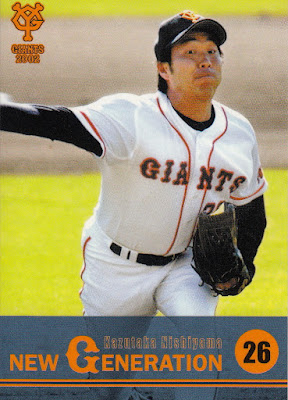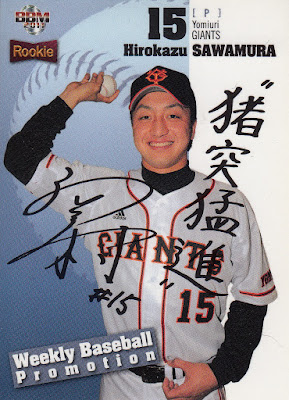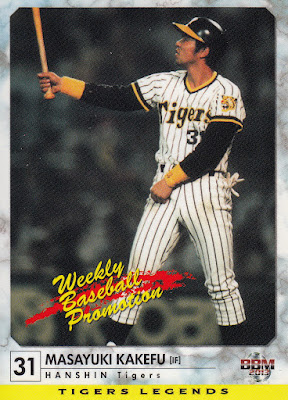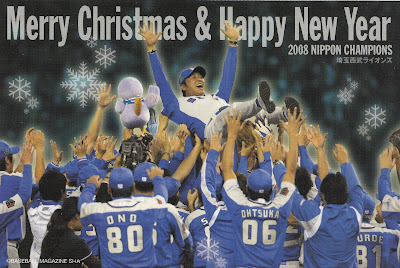The Olympics might have been delayed a year but I'm going to keep publishing these like I had originally planned.
The 1992 Summer Olympics in Barcelona, Spain were the first games to feature baseball as an official medal sport. Once again there were eight teams participating and for the first time, one of those teams was Cuba. The host country Spain also made their Olympic debut that year and were joined by Japan, the US and Taiwan (who had played in all the Olympics so far) as well as 1984 participants Italy and the Dominican Republic and 1988 participant Puerto Rico. South Korea did not qualify for the tournament.
For the first time the games would be split between two venues - Estadi La Feixa Llarga in L'Hospitalet de Llobregat and Estadi Olimpic de Viladecans in Viladecans (hometown of Enrique Cortés Pes of the Spanish team). The two venues were only about eight miles apart. The ballpark in L'Hospitalet de Llobregat has been converted to a football stadium but the one in Viladecans is still configured for baseball and is the home ballpark for CB Viladecans of the División de Honor de Béisbol, the highest level of baseball played in Spain.
Despite the decision to allow professionals to participate by the international organizations for other sports (such as basketball - the Barcelona Olympics saw the first
US "Dream Team" completely dominate the competition), baseball once again was limited to amateurs. As a result Japan's 20 man roster was again made up of corporate league and college players. Well, actually, it was almost entirely corporate league players as there was only one collegiate player - Hiroki Kokubo of Aoyamagakuin University. The coaching staff was made up entirely of corporate league coaches, led by Masatake Yamanake of Sumitomo Metal, who had been the pitching coach for the 1988 team. The other two coaches were Nobuhisa Arai of Kobe Steel and Hiroo Nobata (at least that's how Google Translate is rendering 野端啓夫 - not sure if that's correct) of Mitsubishi Heavy Industries Mihara. For the first time the roster featured a player who had previously played in the Olympics as Masafumi Nishi of Osaka Gas had also been on the 1988 team. Here's the roster:
| Number |
Position |
Player |
Birthdate |
Team |
Draft |
| 18 |
Pitcher |
Itoh, Tomohito |
10/30/1970 |
Mitsubishi Motors Kyoto |
1992 Swallows 1st |
| 28 |
Outfielder |
Kawabata, Shinichiro |
12/5/1966 |
Sumitomo Metal |
N/A |
| 17 |
Pitcher |
Kohiyama, Masahito |
5/7/1969 |
Nippon Oil |
1992 Baystars 1st |
| 7 |
Infielder |
Kojima, Hirotami |
3/3/1964 |
Mitsubishi Heavy Industries Nagasaki |
N/A |
| 8 |
Infielder |
Kokubo, Hiroki |
10/8/1971 |
Aoyamagakuin University |
1993 Hawks 2nd |
| 23 |
Catcher |
Miwa, Takashi |
12/1/1969 |
Kobe Steel |
1993 BlueWave 2nd |
| 26 |
Outfielder |
Nakamoto, Hiroshi |
8/22/1966 |
Matsushita Electric |
N/A |
| 4 |
Infielder |
Nishi, Masafumi |
11/25/1960 |
Osaka Gas |
N/A |
| 16 |
Pitcher |
Nishiyama, Kazutaka |
8/28/1970 |
NTT Shikoku |
1992 Giants 3rd |
| 1 |
Infielder |
Ohshima, Koichi |
6/17/1967 |
Nippon Life |
1992 Buffaloes 5th |
| 9 |
Outfielder |
Sakaguchi, Hiroyuki |
8/2/1965 |
Nippon Oil |
N/A |
| 25 |
Outfielder |
Satoh, Shinichi |
8/7/1965 |
Takugin |
1992 Hawks 4th |
| 12 |
Pitcher |
Satoh, Yasuhiro |
7/25/1967 |
Prince Hotel |
N/A |
| 19 |
Pitcher |
Sugiura, Masanori |
5/23/1968 |
Nippon Life |
N/A |
| 14 |
Pitcher |
Sugiyama, Kento |
12/12/1968 |
Toshiba |
1992 Lions 1st |
| 10 |
Catcher |
Takami, Yasunori |
1/6/1964 |
Toshiba |
N/A |
| 6 |
Infielder |
Togo, Akihiro |
2/18/1967 |
Nippon Life |
N/A |
| 5 |
Infielder |
Tokunaga, Koji |
9/3/1968 |
Nippon Oil |
N/A |
| 3 |
Infielder |
Wakabayashi, Shigeki |
12/24/1966 |
Nippon Oil |
N/A |
| 15 |
Pitcher |
Watanabe, Katsumi |
5/16/1962 |
Daishowa Paper Hokkaido |
N/A |
The format for the tournament changed for these games. Instead of having the teams split into two groups for the first round, this time all eight teams played games against each of the other seven teams in the first round. The top four teams after this round would go on to the medal rounds. The semi finals would pit the first place team against the fourth place team and the second place team against the third place team. The winners would meet in the gold medal game while the losers would play for the bronze medal.
Japan went 5-2 in the first round. They absolutely dominated in the games they won, defeating Puerto Rico 9-0, Spain 12-1, the Dominican Republic 17-0, Italy 13-3 and the US 7-1. They lost to Cuba 8-2 and Taiwan 2-0. Their record put them in a three way tie with Taiwan and the US for second best record after Cuba's undefeated 7-0. Japan was awarded second place overall on the basis of the "runs allowed" tie breaker with Taiwan in third place and the US in fourth.
Japan lost to Taiwan 5-2 in their semi-final matchup which meant for the first time in Olympic baseball history (all three Olympics of it) Japan would not be playing in the gold medal game. Team USA lost to Cuba 6-1 in their semi-final game so for the first time in Olympic baseball history the US would not be in the gold medal game either. The two teams squared off in the bronze medal game which saw Japan take an early 4-0 lead in the second inning. The US made it a close 4-3 game by the end of the fifth but Japan scored another four runs in the sixth and held on for an 8-3 victory. Cuba defeated Taiwan 11-1 to win the gold medal game.
Surprisingly only eight members of the Japanese Olympic baseball team went on to play professionally in NPB. This is the smallest number from any of the four amateur Olympic team rosters (1984, 1988, 1992 and 1996) and half the number who went pro from the 1984 roster. Here's a card and a blurb of each of the future professionals:
 |
| 1994 BBM Late Series #572 |
Tomohito Itoh was picked by three teams in the first round of the 1992 NPB draft - the Carp, the BlueWave and the Swallows. Yakult won the lottery and he had an outstanding half season for them in 1993 - pitching in 14 games (12 starts) and going 7-2 with a 0.91 ERA and 126 strikeouts in 109 innings. He threw five complete games and four shutouts. He tied an NPB record by striking out 16 Giants in a game although he ultimately lost the game. Unfortunately he went down with an injury in early July and didn't pitch anymore the rest of the season. His numbers were still impressive enough that he won the Central League Rookie Of The Year award that year. Elbow and shoulder issues kept him sidelined for two more seasons - he didn't pitch again until 1996. He was fully healthy again in 1997, going 7-2 with a 1.51 ERA and 19 saves out of the bullpen for the Nippon Champion Swallows. His performance won him the 1997 Comeback Award. He was back in the rotation in 1998, going 6-11 with an ERA of 2.72. Injuries cost him about half of each of the next two seasons and he only threw four innings with the top team in 2001. He retired following the 2003 season and was a coach for the Swallows for the next 14 years. He spent 2018 as the manager of the Toyama GRN Thunderbirds of the independent Baseball Challenge League and has been the pitching coach for Rakuten since 2019.
 |
| 2000 BBM #204 |
Masahito Kohiyama was a highly regarded prospect coming out of Keio University in 1991 but he wanted to play in the Olympics so he joined Nippon Oil rather than going pro. He threw a complete game shutout against Puerto Rico in the opening game of the tournament. He was taken in the first round of the 1992 draft by Yokohama (who were in the process of changing their name from Whales to the Baystars). He started 1993 in the Baystars' rotation but was moved to the bullpen midway through the season. That was his best season, going 3-9 with a 2.99 ERA. His numbers declined the following year and an elbow injury cost him playing time after that. He ultimately missed the entire 1998 season recovering from Tommy John surgery. He had a decent comeback in 1999, going 4-1 with a 3.77 ERA in 20 games, mostly out of the bullpen, but he only got into 11 games with the
ichi-gun squad over the next two seasons and he was released following 2001. He joined another team called the Whales for 2002 - the China Trust Whales of the CPBL - but he re-injured his elbow in mid-season and retired. He's worked for TBS radio ever since.
 |
| 1999 Calbee #132 |
Not only was Hiroki Kokubo the sole collegiate player on the 1992 roster, at 20 years old he was also the youngest. He was only in his third season at Aoyamagakuin University when he was selected for the team. He homered twice in the tournament, once against Spain and once against the Dominican Republic. He was the second round pick of the Fukuoka Daiei Hawks in the 1993 draft and spent 1994 as a backup player with the top team. He played for the Kauai Emeralds of the Hawaiian Winter League that fall, leading the league in batting (.370), hits (74) and doubles (21). He had 9 home runs, second only to his teammate David Kennedy, and was named MVP. His home run in the last game of the season helped clinch the league championship and was witnessed by Sadaharu Oh, who would the new Hawks manager in 1995. He must have made an impression on Oh as he ended up becoming the Hawks starting second baseman that season. He led the Pacific League in home runs that season with 28. He led the league in RBIs with 114 in 1997. He missed most of 1998 due to his involvement with
a tax evasion scandal. He was convicted and sentenced to one year in prison although instead of going to jail he instead served a two year suspended sentence (H/T to
Sean for explaining his sentencing to me) He was also fined 7 million yen. He was suspended for 8 weeks and fined another 4 million yen by the league. He moved to the corner infield positions when he returned in 1999 and was the team's regular third baseman by 2000. He had perhaps his best season in 2001, hitting .290 with 44 home runs and 123 RBIs. He missed the entire 2003 season due to an knee injury he suffered during spring training and then bizarrely was traded to the Yomiuri Giants for...nothing. The speculation has always been that Daiei was preparing to sell the Hawks and sent Kokubo to the Giants to make sure Yomiuri approved of the sale but I don't know if that's true or not. However, Daiei did sell the Hawks to Softbank following the 2004 season. Kokubo bounced back in 2004 with another great season, hitting .314 with 41 home runs and 96 RBIs, winning the Comeback Award. The Giants named him team captain in 2006 but he left the team as a free agent after the season and returned to Fukuoka. His numbers started to decline each year as age caught up with him. His last big hurrah was in the 2011 Nippon Series when he hit .320 and won the Series MVP award - at 40 years and one month he was the oldest player to ever win the award. He got his 2000th hit in 2012 and retired at the end of the season. He was the last active player from the 1992 Olympic baseball team. He ended his career with 413 home runs, 3 Best 9 awards, 3 Golden Glove awards and was selected for the All Star team 13 times (although he only played 11 times). He was the manager for Samurai Japan from 2013 to 2017, leading the team to a second place finish in the 2015 Premier 12 and a third place finish in the 2017 World Baseball Classic.
 |
| 1995 BBM Orix Team Set I #15 |
Like Kohiyama, Takashi Miwa was a star in the Tokyo Big Six league - although he was at Meiji as opposed to Keio. He joined Kobe Steel after graduation and was eventually drafted by Orix in the second round of the 1993 draft. He spent most of 1994 with the farm team but was the primary back up to catchers Makoto Takada and Satoshi Nakajima over the next couple seasons. He was the starting catcher in 1997 but he also was involved in the same tax evasion scandal that Kokubo was involved in. He ultimately was also sentenced to one year in prison (he served a three year suspended sentence instead of going to jail) and a 5 million yen fine and was suspended for seven weeks and fined 2 million yen by the league. While he still got into 77 games in 1998, he lost his starting role to Takeshi Hidaka. He remained Hidaka's backup for the remainder of his career. Oddly enough, he made the 2003 All Star team while Hidaka did not. He retired following the 2004 season and has been a coach with Orix ever since with the exception of a four year stint with Rakuten from 2011 to 2014.
 |
| 2002 Giants Team Issued Card #26 |
Kazutaka Nishiyama was a highly regarded pitcher with Kochi High School in the late 80's and was selected by the Lotte Orions (who were managed at the time by Kochi-alum Michio Arito) in the fifth round of the 1988 draft. Nishiyama decided he wasn't ready to turn professional yet and instead joined NTT Shikoku of the corporate leagues. He appeared regularly with the Japanese National Team in various tournaments in the early 1990's but he only made one appearance in the 1992 Olympics - he apparently hurt his arm pitching against the Dominican Republic. He was a third round pick of the Yomiuri Giants in that fall's draft and spent most of the next two seasons recovering from his Olympic injury. He was fully healthy by the middle of 1995 and put together a great half season, going 5-1 with an ERA of 0.55 and 7 saves in 20 games out of the bullpen. His numbers declined somewhat the next couple years as he got more regular work although he pitched in the 1996 Nippon Series. He put together another good season in 1998 (4-3 with an ERA of 2.48 in 49 games). but the drop off in his numbers continued in 1999 and his playing time got less and less as a result. He retired after spending the entire 2003 season with the Giants' farm team. He's either been an advance scout or an official scorer for the Giants ever since.
 |
| 1999 BBM #442 |
Koichi Ohshima was another former Tokyo Big Six star, making the league's Best 9 team three times while playing for Hosei University. He joined Nippon Life after graduating from college in 1990 and spent a couple seasons playing for them before being drafted by Kintetsu in the fifth round of the 1992 draft. For his first couple seasons with the Buffaloes he was mostly the backup second baseman behind Daijiro Ohishi alhough he played some at short and third as well. He hit in the .280s his first two years but his average dropped to .192 in 1995 and the Buffaloes traded him and Mitsuhiro Kubo to the Orix BlueWave for Toru Takashima and Kenji Horie after the season. He found a home in Orix and helped them win the Nippon Series in 1996. He took home some hardware after the season as well, being named to the Pacific League Best 9 team at second and winning a Golden Glove. He established himself as a solid performer, winning a second Golden Glove in 1997. He had his best season in 2000, hitting .283 with 35 sacrifices and 90 walks. He made his only All Star team that season and was again named to the Best 9 team and won his third Golden Glove award. By 2004 he was 37 and injuries were cutting into his playing time. He left Orix after that season and signed on with the expansion Tohoku Rakuten Golden Eagles for their inaugural season of 2005, He retired after that season and became a coach for Orix, a position he continued in until 2015. He became the first manager of the Eat Factory corporate league team last season (Eat Factory is a company that manages restaurants and bars in Osaka).
 |
| 1999 Future Bee Swallows #026 |
Shinichi Satoh was 26 years old when he played in the Olympics, making him the oldest of the players on the team who went professional. He had spent a couple years playing for Takugin after he graduated from Tokai University. He had 3 home runs and 11 RBIs in the Olympics, second most on the team in both categories (behind Koji Tokunaga who had 4 home runs and 13 RBIs). He was taken in the fourth round by the Hawks in the 1992 draft. He had a poor first season with the Hawks in 1993, hitting just .180 in 107 plate appearances. His numbers didn't improve the next two seasons and he was traded along with Kazuya Tabata to the Swallows for Shikato Yanagita and Ryo Kawano. His numbers weren't a whole lot better his first couple seasons with Yakult and he didn't get a lot of playing time, although he did play in the 1997 Nippon Series, hitting a two run home run in Game Four. Tsutomo Wakamatsu, who took over from Katsuya Nomura as manager in 1999, saw something in Satoh, however, and installed him as one of his regular outfielders along with Mitsuru Manaka, Mark Smith, and Satoshi Takahashi. Satoh responded with unquestionably the best season of his career - hitting .341 with 13 home runs in 113 games. He set a Swallows team record with a 25 game hitting streak that season. He tore his right elbow ligament in May of 2000 and ended up missing most of the next season and a half recovering. He returned to the
ichi-gun Swallows in 2002 and had decent numbers in limited playing time in 2003 and 2004. He retired after the 2005 season and became a coach for Yakult until 2014. He also coached for Orix in 2015.
 |
| 1994 Takara #29 |
Kento Sugiyama pitched for Toshiba for a few years after graduating from Senshu University. He was the first round pick of the Lions in the 1992 draft. He got into Pacific League leading 54 games in his rookie year of 1993, mostly out of the bullpen. He went 7-2 with a 2.80 ERA and 5 saves and 82 strikeouts in 74 innings, good enough numbers to earn him the Rookie Of The Year award that year - with Itoh winning the Central League award that season both of the 1993 Rookies Of The Year had been on the 1992 Olympic squad. Like Itoh, however, injuries would take a toll on his career. The 74 innings he threw in his first season ended up being the most he would ever pitch in a season. He had a decent 1994 campaign, going 4-2 with an ERA of 3.56, six saves and 63 strikeouts in 60 and 2/3 innings over 54 games, making the All Star team and ending the season with a couple appearances in the Nippon Series against the Giants. He had shoulder issues the following year which cut his playing time roughly in half. Due to his injury he was pretty much forced into a "lefty one out guy" (LOOGY) role for the remainder of his time with the Lions. He pitched in both the 1997 and 1998 Nippon Series in a losing effort for the Lions. He was traded to the Hanshin Tigers in the middle of the 1999 season for Katsuhiro Hiratsuka. Hanshin made the odd decision to take a guy who had been used in a one or two batter at time role and turn him into a starter, having him start nine games. The results were pretty much what you'd expect - Sugiyama went 2-4 with a 5.08 ERA in 16 total games with the Tigers in 1999. He was banished to Hanshin's farm team in the first half of 2000 before being dealt to the Osaka Kintetsu Buffaloes in May for Takashi Yoshida and Shinichi Nishikawa. The Buffaloes moved him back into the LOOGY role but his ERA climbed to 6.14. He started 2001 with Kintetsu's farm team before being traded mid-season for the third consecutive year. This time he was sent to the Yokohama Baystars for Iori Sekiguchi. The Baystars released him after the season and he announced his retirement after not attracting any interest in that fall's 12 team tryout. He was a batting practice pitcher for Yokohama for a few years after he retired and then became a coach for the Eagles from 2006 until 2009. In 2013 he managed North Leia of the Girls Professional Baseball League (which was renamed the Japan Women's Baseball League in 2014). He was back coaching with the Eagles in 2015-16, coached for the Lamigo Monkeys of the CPBL in 2017 and had been a coach with the Lions since 2018.
I want to also mention that the head coach and one of the corporate league players have some baseball cards, despite never appearing in NPB.
 |
| 2017 BBM Infinity #043 |
I had mentioned earlier that head coach Masatake Yamanaka had been the pitching coach of the 1988 squad. I discussed his career in the Tokyo Big Six league and the corporate leagues in m
y post for the 1988 team along with showing a baseball card of his from the 2011 BBM Legend Of The Tokyo Big Six set. He also had a card in BBM's Infinity set from 2017 where they showcased a trio of significant players who never played in NPB.
 |
| 2000 Upper Deck Sydney Olympic Games Japanese Team Cards #223 |
Msanori Sugiura joined Nippon Life of the corporate leagues after graduating from Doshisha University in 1991. He went 2-1 in the 1992 Olympics, beating the US twice (including in the bronze metal game) and losing to Taiwan in the semi-final game. He would play for the Olympic Team two more times - in 1996 and 2000 - before he retired as a player following in the 2000 season.

























































